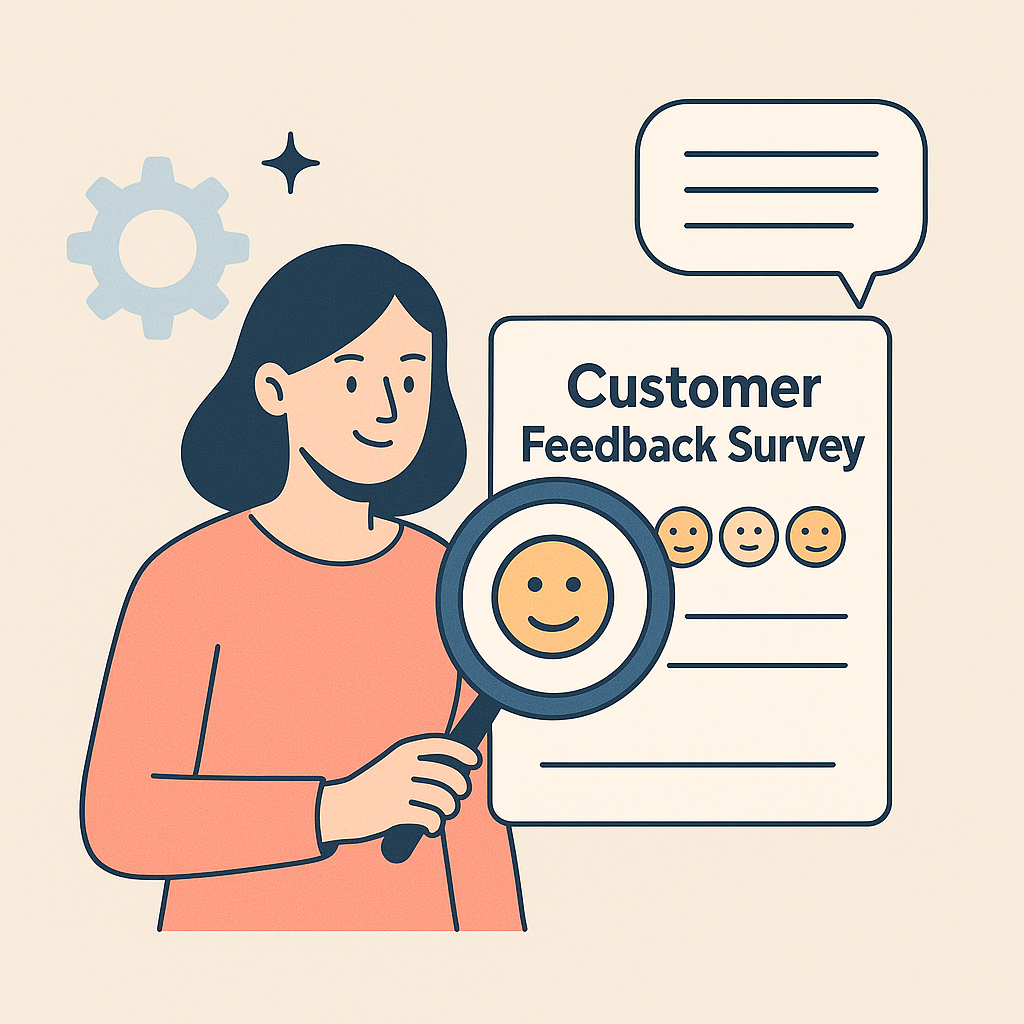
Many teams send surveys hoping to get feedback that helps them improve—but what they actually get is vague, generic responses that rarely lead to meaningful change. The issue isn’t that customers don’t care. It’s that most surveys are built wrong: too broad, too long, or too disconnected from the user’s actual experience.
In this guide, we’ll walk through the principles of designing customer feedback surveys that uncover actionable insights. We’ll also cover examples from real product and research work—what’s worked, what hasn’t, and how to transform basic survey tools into powerful customer understanding systems.
The most common mistake is launching a survey without clarity on what you’re trying to learn. Before drafting any questions, ask yourself:
Bad example:
"Let’s see what users think about the product."
Better example:
"We need to understand why 40% of users drop off after onboarding, so we can improve retention in week 1."
Setting a specific objective not only guides your questions—it ensures you’re collecting insight, not noise. Without this step, it’s easy to fall into the trap of running “feedback theater,” where surveys are conducted but never acted upon.
Different types of customer surveys are built for different use cases. The key is to match your method to the insight you're trying to surface.
Used to measure customer loyalty and predict referral behavior. The question is simple:
“How likely are you to recommend [product/service] to a friend or colleague?”
Follow it up with:
“Why did you give that score?”
When to use: Periodic pulse checks (quarterly or bi-annually), especially useful in tracking long-term perception trends.
Measures how satisfied customers are with a specific interaction or moment.
“How satisfied were you with your onboarding experience?”
When to use: After support tickets, purchases, or onboarding steps.
Assesses how easy it was for the user to complete a task.
“How easy was it to [complete action]?”
When to use: After workflows like password resets, plan upgrades, or feature usage.
These are targeted at understanding specific areas of the product—such as a new feature rollout or updated UI. These go deeper and are best used with a mix of closed and open-ended questions.
When to use: Right after a user interacts with a feature, completes a workflow, or uses a beta release.
Designed to uncover reasons for churn, cancellation, or non-conversion. These can provide goldmine insights about what’s not working or what expectations weren’t met.
When to use: Immediately after a user cancels, downgrades, or decides not to purchase.
Survey questions should be intentional, behavior-based, and clear. Here are three categories of high-performing questions—with examples from actual SaaS and service businesses:
These help you identify friction points and assess ease of use.
These assess whether users are getting the value they expected.
These help you understand the tone and feelings behind behavior.
Avoid these common question traps:
Below are optimized survey templates for different customer journey stages. These have been battle-tested in real research projects and consistently yield strong completion rates and actionable data.
Goal: Identify early confusion or friction
Questions:
Goal: Assess effectiveness and usability of a specific feature
Questions:
Goal: Identify patterns behind churn or switching
Questions:
Real-world example:
One SaaS company was seeing consistent churn after the first billing cycle. A simple exit survey revealed that 45% of churned users were confused by the difference between two pricing plans. Revising the plan descriptions and adding an in-app comparison reduced churn by 22% in the next quarter.
When and how you deliver a survey dramatically impacts response rate and insight quality.
A product-led company once experimented with embedding a one-question widget on their pricing page:
“What’s stopping you from signing up today?”
In a week, they collected 300+ responses. Top themes included unclear plan benefits and concerns about long-term contracts. Addressing these doubled free trial conversions the following month.
You don’t need an enterprise stack to get started. Here’s a breakdown of tools by use case:
Collecting feedback is just step one. The real value comes from synthesis and action.
Group open-ended responses into common themes. You can do this manually (e.g., tagging responses in a spreadsheet) or use AI-assisted coding tools like UserCall or Dovetail to cluster similar responses automatically.
Not all feedback is equally valuable. Prioritize based on:
Example:
If 10 users complain about billing confusion and 3 users request a dark mode, you know which issue to fix first—even if dark mode is more exciting.
Show customers you heard them. Let them know what changes you made based on their feedback. This builds trust, increases participation in future surveys, and reinforces a customer-centric culture.
In one project, we helped a mid-sized SaaS company redesign its onboarding survey. We stripped it down to just three targeted questions sent on day 4 of the trial. Within two weeks, patterns emerged showing that users struggled with a particular data import step. A small UX tweak to that step resulted in a 12% lift in activation rates.
That’s the power of well-designed feedback loops.
Customer feedback surveys shouldn’t be an afterthought. When thoughtfully executed, they’re one of the highest-ROI tools available for product, UX, and growth teams. Not only do they surface friction—you gain a direct line into your customer’s goals, frustrations, and decision-making process.
Use them wisely, ask better questions, and turn feedback into fuel.